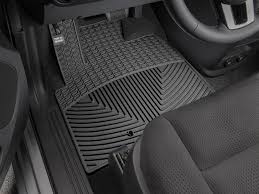We have spoken in great length in previous blogs about how to get you home ready for spring, summer, fall, and winter! But what about your car that you drive everyday! Yes you keep up with the maintenance that it needs but is it really ready for the fall and winter months?
Your car can be impacted and not in a good way when the months get dangerously cold. We have experienced such low temperatures here the past couple of years that we need to prep our car for the chill! Using the fall months to prep is the best time. Here are 10 great tips from the National Dispatch to make sure that you drive right into spring with no problems!
Check the Belts and Hoses
Look for cracks, leaks, and wears in the belts and hoses. You want to ensure that there are no signs of splitting, fraying, or glazing. One major problem with faulty belts and hoses is overheating. Although this usually occurs in the Summer, it can occur anytime of the year, including during the colder months.
If you are not sure of these issues, or even how to find them your best bet is taking your car either to a local trusted mechanic or back to your dealership to have them take a look under the hood.
Check the fluids
It is crucial to replace your car’s fluid levels, as necessary. This would include windshield washer fluids, transmission fluids, coolant, brake fluids, and power steering fluids. All are very important for ensuring that your car runs smoothly. Washer fluid is important for maintaining visibility. Transmission fluid is important for cooling. Coolant regulates the engine’s temperature, while brake fluid serves as a lubricant, preventing corrosion. Power steering fluid is crucial for operating the vehicle.
Check your tires
Check the tread, inflation, and overall condition of your tires. Rotate your tires, so that your tires wear evenly. Make sure your tire’s contain the appropriate amount of air. Getting air has become so easy. Most gas stations have an air station and its all digital.  Find your the PSI number on your tires, plug it in and fill up! Maintaining proper tire pressure is very important, because cold weather causes tires to lose air quickly.
Find your the PSI number on your tires, plug it in and fill up! Maintaining proper tire pressure is very important, because cold weather causes tires to lose air quickly.
Make sure you have the proper tires. This time of year comes with the potential of snow and ice. If your car has tires that you can put on in the winter “snow tires” consider making an appointment in November to get them put on.
Prep for the cold
Getting stranded on the side of the road any time of the year is not fun. As the weather turns cold, you especially need to be prepared for a roadside emergency. Be prepared if a situation like this were to occur. Stock your vehicle with the following items:
- Gloves
- Ice scraper
- Blankets
- First aid kit
- Jumper cables
- Flashlight
Check the oil
As rule of thumb you should always get an oil change every 3,000 miles. Though some cars are different. Some can go 5,000 even 7,500 miles! Always follow whatever your drivers manual tells you. Cars are made so high tech these days that many of them will give your alerts on the percentage of your oil life.
Check the heat
Check to make sure your heat is working properly. You do not want to be without it when cold weather hits. Make sure the defroster works, as well. If either of these components are in need of repair, take your vehicle to your local auto repair shop or the dealership.
Check the brakes
It is important to get your brakes checked before getting well into the Fall and Winter seasons. Brakes are crucial for safe driving. Cold weather heightens brake problems, since the roads have the potential of becoming slippery from snow and ice. Listen for unusual noises that may point to failing brake pads.
When you bring your car the dealership for an oil change a lot of place will look at everything besides just changing your oil. They are good on letting you know the life left of your brakes.
Put in all weather floor mats
Most cars come with fabric floor mats that really take on the wear and tear of the year. Now is a great time to put in or even purchase all weather floor mats. These mats tend to be plastic and water proof. These help with the sand and salt that we bring into the car during the winter months.
tend to be plastic and water proof. These help with the sand and salt that we bring into the car during the winter months.
You can purchase these mats at many different locations and the range in all different prices. You can get them custom made, from your dealership, or your local auto store.
Check the lights
Take a walk around the exterior of your vehicle. Check to make sure that all your lights, including headlights, taillights, brake lights, and flashers, are working as they should. If needed, replace a broken or blown-out bulb. You can grab these clubs at your local auto store for around $5-$10 and replace them yourself very easy. YouTube is also a great reference to help you figure out how to do this. These lights help tother drivers see you on the road, even in bad weather or other conditions where visibility is bad.
Check the battery
Check the battery for charge and signs of corrosion. You can even take your vehicle to a local auto parts store for diagnosis. Most of the time, this is at no cost to you. If you car needs a new battery, take your car to a mechanic to get your battery replaced. The battery is critical to start your vehicle.
All these things are so important to make sure your car runs properly and safely during the frigid months. For some these things are easy to do themselves. Others might now know how so I can’t stress enough to take it to your local car dealership. Keep up with all the maintenance through out the year and as needed so you don’t end up with a big bill!
